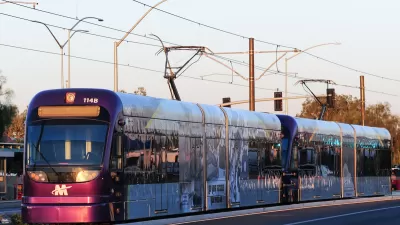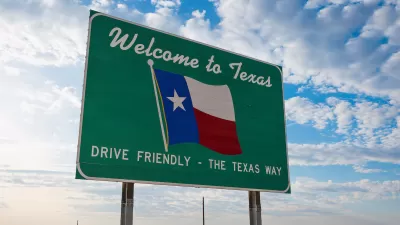A news study brings the receipts on state and regional transportation spending.

TransitCenter shares news of a recent study by the National Cooperative Highway Research Program that digs into how states spend their federal transportation money, finding that less than 4 percent of eligible federal highway funding is spent on transit projects—a decision known as “flexing.”
“Only eight states were ‘superflexers,’ transferring more than 4% of their federal highway funding to FTA: Nevada, Washington, Arizona, New York, Vermont, Oregon, Maryland, California, and New Jersey,” explains the article of the study’s findings. According to the study, the Congestion Mitigation and Air Quality (CMAQ) and the Surface Transportation Block Grant (STBG) programs were the programs most likely to be flexed for transit projects.
The report also helps understand why certain states and metropolitan planning organizations (MPOs) decide to flex their federal money to transit projects: it all comes down to “state and regional priorities.” According to the article’s explanation of the study’s conclusion, “Where state and local decisionmakers value transit, states use more of their highway dollars for public transportation.”
The article digs into more detail on the examples of Vermont and New Jersey, the former as an example of a mostly rural state, the latter as mostly urban. At the regional level, the article identifies leadership from MPOs in California and New York.
A May 2022 article by TransitCenter details how states and MPOs can flex highway dollars for transit projects.
The “Federal Funding Flexibility: Use of Federal Aid Highway Fund Transfers by State DOTs” report by the National Cooperative Highway Research Program was published in June 2022 by the National Academies of Sciences, Engineering, and Medicine.
FULL STORY: Want to Use Highway Dollars for Transit? These Places Already Do

Manufactured Crisis: Losing the Nation’s Largest Source of Unsubsidized Affordable Housing
Manufactured housing communities have long been an affordable housing option for millions of people living in the U.S., but that affordability is disappearing rapidly. How did we get here?

Americans May Be Stuck — But Why?
Americans are moving a lot less than they once did, and that is a problem. While Yoni Applebaum, in his highly-publicized article Stuck, gets the reasons badly wrong, it's still important to ask: why are we moving so much less than before?

Using Old Oil and Gas Wells for Green Energy Storage
Penn State researchers have found that repurposing abandoned oil and gas wells for geothermal-assisted compressed-air energy storage can boost efficiency, reduce environmental risks, and support clean energy and job transitions.

Updating LA’s Tree Rules Could Bring More Shade to Underserved Neighborhoods
A new USC study finds that relaxing Los Angeles’ outdated tree planting guidelines could significantly expand urban tree canopy and reduce shade disparities in lower-income neighborhoods, though infrastructure investments are also needed.

California's Canal Solar Projects Aim to Conserve Resources and Expand Clean Energy
California’s Project Nexus has begun generating electricity from solar panels installed over irrigation canals, with researchers and state agencies exploring statewide expansion to conserve water and boost clean energy production.

HHS Staff Cuts Gut Energy Assistance Program
The full staff of a federal program that distributes heating and cooling assistance for low-income families was laid off, jeopardizing the program’s operations.
Urban Design for Planners 1: Software Tools
This six-course series explores essential urban design concepts using open source software and equips planners with the tools they need to participate fully in the urban design process.
Planning for Universal Design
Learn the tools for implementing Universal Design in planning regulations.
Heyer Gruel & Associates PA
City of Moreno Valley
Institute for Housing and Urban Development Studies (IHS)
City of Grandview
Harvard GSD Executive Education
Salt Lake City
NYU Wagner Graduate School of Public Service
City of Cambridge, Maryland





























